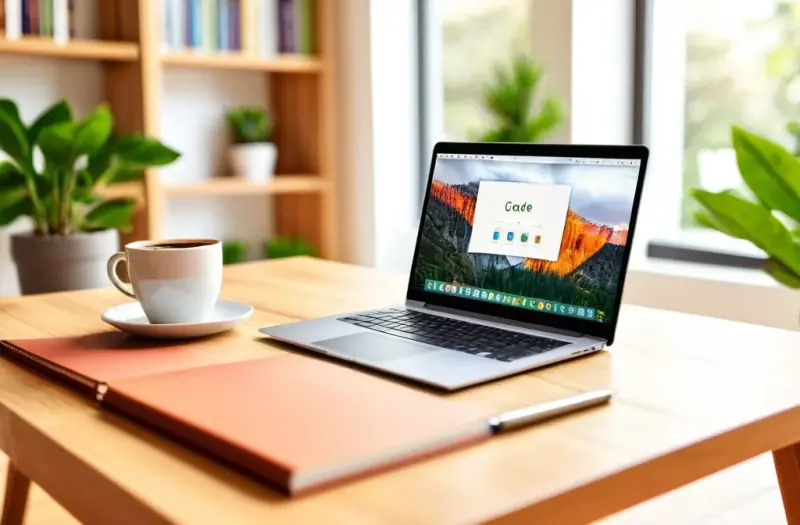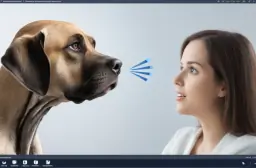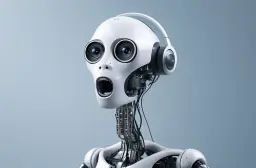How AI Text-to-Image Transforms Graphic Design World

Table of Contents
The world of graphic design is evolving rapidly, and one of the most exciting technological advancements is AI text-to-image technology. Imagine typing a simple description, and within moments, an image appears, perfectly matching your vision. Sounds like science fiction, right? But this is now a reality, thanks to AI-driven creativity tools that are transforming how we approach graphic design.
In the past, creating stunning visuals required an in-depth understanding of design software and an eye for detail. But with AI text-to-image tools, even those with limited design skills can generate high-quality visuals with just a few words. This new form of automated graphic design is not only making design more accessible but also pushing the boundaries of what’s possible, sparking a new era of innovation in the creative industries.
So, how exactly does AI text-to-image technology work, and how is it reshaping the graphic design world? Is this the end of traditional graphic design or simply the beginning of a new, exciting chapter? Let’s dive in and explore how artificial intelligence is revolutionizing the way we create and experience digital art.
The Rise of AI Text-to-Image Technology in Graphic Design
The emergence of AI text-to-image technology marks a significant turning point for graphic design. No longer do designers need to rely solely on manual creativity and traditional design software to create impactful visuals. With AI-driven tools, a few keystrokes can bring ideas to life instantly, offering unprecedented freedom for both novice and seasoned designers.
At the core of this technology is machine learning, which enables AI to learn patterns from vast datasets of images and descriptions. This process, known as image synthesis, allows AI to generate original images that match the textual input. Over time, AI becomes more adept at understanding nuances in language, resulting in highly accurate and creative outputs. It’s like having an assistant that can interpret your ideas and produce visual content instantly.
The potential applications for AI text-to-image in graphic design are vast. From concept art for video games to marketing campaigns, AI-generated images are already being used in various industries to streamline the design process and reduce time spent on visual creation. With AI-powered creativity, graphic designers can now focus on the strategic and conceptual aspects of their work, letting the technology handle the heavy lifting.
How AI Is Shaping the Future of Design Tools

AI design tools are making it easier for professionals and hobbyists alike to produce high-quality visuals. These AI graphic design platforms allow users to input descriptive text, and the AI will generate an image that fits their vision, making the creative process faster and more intuitive. Whether you’re designing for social media, advertising, or print materials, AI design tools help eliminate the need for tedious manual design work.
One of the most significant advantages of AI-powered design tools is their accessibility. Traditional graphic design required specialized knowledge of complex software, often taking years to master. With AI-driven creativity, anyone can create compelling visuals, even without previous design experience. This democratization of design is opening up new opportunities for people across various fields—be it content creators, marketers, or entrepreneurs.
Moreover, AI can significantly reduce the time spent on design iterations. In the past, achieving the perfect design involved multiple revisions and back-and-forth between designers and clients. Now, AI tools allow for rapid experimentation, making it easier to adjust visual elements on the fly. This efficiency has made AI-generated images an invaluable resource for industries that require quick turnaround times, such as advertising and social media marketing.
Exploring Creative AI Applications in Graphic Design
AI isn’t just making design easier; it’s also pushing the boundaries of creativity in the visual arts. Generative design AI and AI art generation have opened up new avenues for artists and designers to explore. AI can generate entirely new visual styles, blending art movements from different periods or creating never-before-seen imagery by mixing various elements.
For example, an AI can combine elements of cubism, surrealism, and modern design to create a completely unique visual composition based on a few written prompts. This form of creative collaboration between humans and machines is becoming a powerful tool for artists, allowing them to break free from traditional design constraints and explore uncharted creative territories.
Furthermore, AI can offer inspiration and suggest new ideas. By analyzing vast amounts of visual content, AI design tools can recommend styles, colors, and layouts that a designer might not have considered. This ability to generate AI visual content based on established trends or even predictive analytics can provide a competitive edge in industries where staying ahead of visual trends is crucial.
AI Text-to-Image: Enhancing Efficiency and Productivity in Design Projects

In addition to the creative benefits, AI text-to-image technology is significantly boosting productivity in the graphic design world. For designers working on large projects, AI can generate a range of visual elements based on textual descriptions, which can then be refined or customized further. This means designers no longer have to start from scratch each time they create a new image or visual asset.
Consider the time saved when an AI tool generates a concept design, layout, or mood board from a few short lines of text. Designers can then focus on perfecting the details, refining the composition, and adding a personal touch. AI-driven design tools thus allow professionals to spend more time on the elements that truly matter—creativity, strategy, and innovation.
Moreover, AI’s ability to automate repetitive tasks has also been a game-changer for graphic design teams. Tasks such as resizing images, color correction, and creating variations of a design can be automated, freeing up valuable time for more complex and high-value creative work. This leads to a more efficient workflow and improved project turnaround times, which can be especially beneficial for agencies and freelance designers.
The Ethical and Artistic Implications of AI in Graphic Design
While AI text-to-image technology has revolutionized the design world, it also raises important ethical and artistic questions. As AI continues to evolve, some designers worry about the potential for machines to replace human creativity entirely. Will AI-generated images ever match the depth, nuance, and originality of human-made art?
Additionally, there are concerns about ownership and copyright. If an AI generates a piece of artwork based on a designer’s input, who owns the rights to the image? Is it the designer, the AI developer, or the machine itself? These are questions that need to be addressed as AI becomes more integrated into the design process.
There is also the question of AI’s impact on job opportunities in the design industry. While some believe AI will augment human creativity, others worry that automation could displace traditional design roles. The future of AI in graphic design may ultimately lie in finding a balance between leveraging technology for efficiency and maintaining the value of human creativity.
FAQs: Common Questions About AI Text-to-Image Technology
What is AI text-to-image technology?
AI text-to-image technology allows users to generate images from written descriptions using machine learning algorithms, making it easier for designers to create visuals without manual drawing.
How does AI text-to-image work?
AI text-to-image works by analyzing large datasets of images and their corresponding descriptions. Using this data, AI learns to generate new images that match the input text, producing creative visual content.
Can AI replace human designers?
While AI can assist in the design process and automate certain tasks, it is unlikely to fully replace human designers. The most effective use of AI is as a tool that complements human creativity.
Is AI-generated art original?
AI-generated art is original in the sense that it is created based on algorithms, but it can sometimes resemble existing styles or concepts. The originality lies in the unique combinations and variations it can produce.
Are there any ethical concerns with AI-generated designs?
Yes, concerns include copyright issues, the potential for AI to replace human creativity, and the ownership of AI-generated content. These issues are still being debated within the design and tech industries.
Conclusion
AI text-to-image technology has undoubtedly transformed the world of graphic design, offering new tools that enhance creativity, productivity, and accessibility. While it’s clear that AI has the potential to revolutionize the design process, it’s important to balance technology with human creativity to maintain the artistic value that design holds.
As AI continues to evolve, the role of designers will likely change, but AI-powered design tools will remain an essential part of the creative process. Designers now have the opportunity to explore new visual possibilities and create stunning, innovative work in a fraction of the time it once took. The future of design is not about AI replacing humans, but about working together to unlock new realms of creativity.
Popular Tags
ADS SPACE HERE

